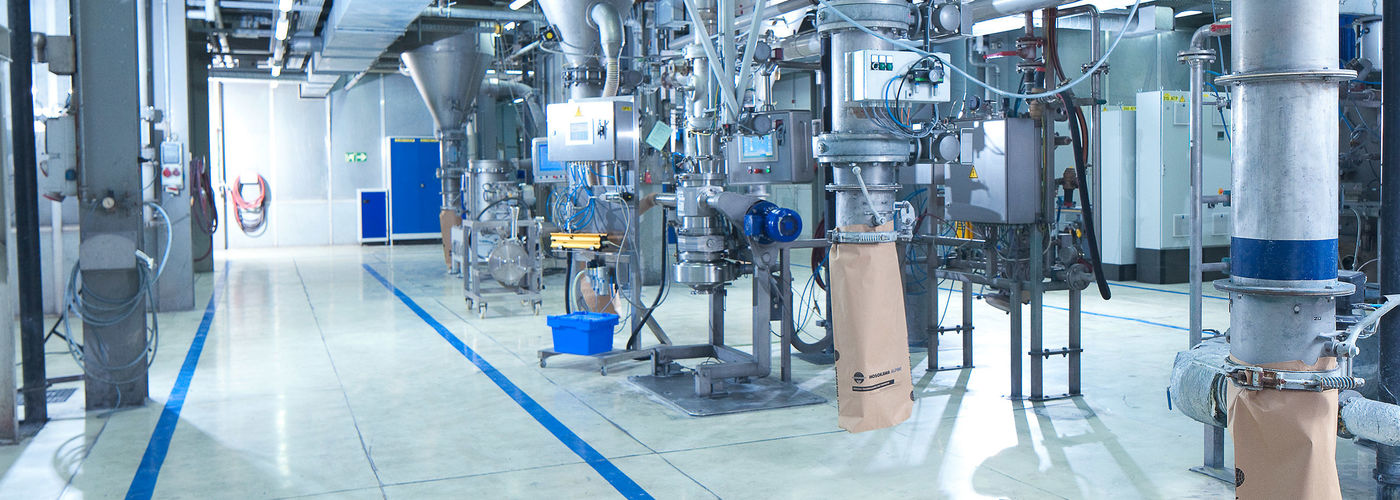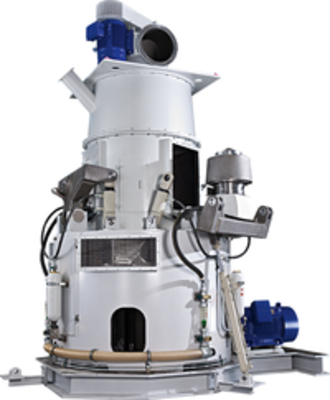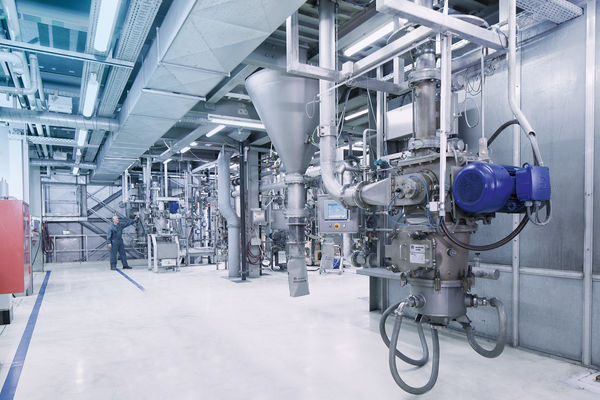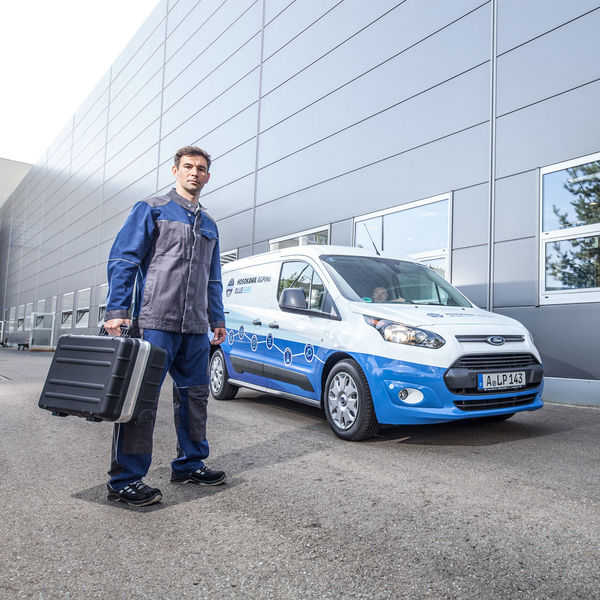- Misowo-walcowy młyn dla wartości próby produktu końcowego od ok. 20 µm i 100 µm
- Preferowany zakres uziarnienia d97 = 50 µm
- Tuleje rolkowe i misa mieląca wykonane ze specjalnych odlewów odpornych na ścieranie
- Stożkowe rolki mielące, hydrauliczny mechanizm pozycjonujący
- Ultra drobny klasyfikator Turboplex zintegrowany z górną częścią młyna

AWM
Features
- Three grinding rollers, each with two hydraulic cylinders to generate the requisite compressive force
- Rollers can be hinged out hydraulically
- Wear parts are easy to exchange
- Compact design
- Combined bevel and spur or planetary gear units for the grinding table drive
- Highly wear-resistant construction materials for grinding table and grinding roller jacket are standard
- Low specific grinding energy
- Integrated air classifier with sharp top-size limitation; selection of classifier to suit the desired end-product fineness
- Fineness range between d97 = 20 – 100 µm
- Mill drive with frequency converter to permit optimum adaptation of the mill to a wide range of particle sizes
- Mill control by means of the drive power or differential pressure monitoring
- Option: hardfaced plates as wear protection in the mill and classifier housing
- Option: design for hot-gas mode to dry the product
- Option: discharge of coarse material via a discharge screw
Designs
- Grinding table: Segments made of chilled iron castings. Additional wear-protection measures can be taken, e.g. harder cast alloys, if the product is particularly abrasive. Table supported in self-aligning roller bearings.
- Grinding rollers: Made of chilled iron castings. Harder cast alloys or hard facing are available for particularly abrasive products. Can be lifted hydraulically to permit maintenance. Roller arms are equipped with special seals.
- Nozzle ring and weir: Hard alloyed steel (NAXTRA)
- Housing: Wear protection inside housing made of hard alloyed steel (NAXTRA).
- Drive / gear unit: Planetary or combined bevel and spur gearing equipped with water- or air-cooling. If the requirements are particularly severe, lubrication of the segmented bearing can be assisted by a hydrostatic lubrication system. The machine is driven by a three-phase motor. But if a frequent fines change is an objective, a frequency converter can be employed for continuous optimisation of the grinding table speed. The grinding rollers raise briefly as the mill runs up to power, thus relieving the load on the drive and making a hydraulic starting clutch unnecessary.
- Nozzle ring, weir, cone: To permit fluidisation of the product, which has a considerable influence on the specific energy consumption, the weir is equipped with a nozzle ring. A cone in the lower section of the classifier facilitates smooth and quiet operation. In addition, the cone also permits production of a second particle fraction in combination with a screw conveyor as well as the removal of abrasive constituents.
- Roller arm, table shape, hydraulics: Every machine size has three roller arms, each of which is separately supported and arranged symmetrically at a 120° angle to each other. The grinding force is transmitted by means of two hydraulic cylinders per roller arm. The pressure of the cylinders is adjustable to achieve the product requirements. The bearing of the roller arms is oil-lubricated. As an option for impact drying applications, the table bearings can be cooled using an oil circuit. The seal between the roller arms and the product is air-rinsed.
- Classifier: Depending on the requirements, there are two types of classifier heads available. The Alpine Turboplex ultrafine classifier is used for high fineness requirements to approx. d97 = 10 µm. The single-wheel and multi-wheel classifying concept permits the manufacture of end products with a high precision of cut which is extremely sharp by today’s standards. For coarser requirements of up to 300 µm, the Micron® separator is used. The extremely low system pressure drop is noteworthy. In both cases, the fineness can be set by changing the speed of the classifying wheel.



